One Hundred Bird Facts
birds by Vagrant GautamA collection of bird facts and pictures, as originally seen on my Twitter.
This is an improved and CC BY-SA 4.0 licensed version of a list of bird facts I originally wrote on Twitter
-
Woodpeckers have ridiculously long tongues that coil up inside their heads and the muscles associated with the tongue protect them against concussions when they peck wood.
-
Chickadees are named because of their call (chicka-dee-dee...) The number of "dees" in the call at any given point in time indicates the severity of a nearby threat. So 3-4 dees for a human, 7-8 dees for a hawk or an owl, for example.
-
There is a bird called a fiery-throated metaltail and unlike what you may expect, it isn't a bird of prey but rather a small, cute Peruvian hummingbird.
-
Birds do not have teeth. They typically break their food on the outside (against rocks, with talons, etc.) and swallow it whole.
-
Sometimes you get gynandromorph birds where a bird has characteristics of both the male and the female birds of the species. It's easiest to spot in sexually dimorphic species (i.e., where the male and female are visibly different).
-
The smallest bird in the world is the bee hummingbird which can be just 5 cm big (just shy of 2 inches) and not even 2 grams (0.07 oz) in weight.
-
The piercing cry that you probably associate with bald eagles because of movies is actually from the red-tailed hawk, which is very commonly used as a voice actor for bald eagles. The actual bald eagle call is extremely wimpy.

Not-quite-adult bald eagle -
Sometimes birds that eat berries get drunk on overripe fruit that's started to ferment.
-
The fastest bird in the world is the peregrine falcon (gorgeous bird). It's been clocked at speeds of 320 kmph (220 mph), making it the fastest animal ever (cheetahs are just shy of 100 kmph / 62 mph).
-
The loudest recorded bird so far is the white bellbird (up to 125 decibels, the equivalent of a jet engine taking off). The males scream into the faces of the females to prove they are worthy mates. Mmhmm.
-
Flamingos get their colour from the food they eat - they need carotenes to get their bright pink colour.
-
The iridescence on hummingbirds comes from structural colour, i.e., the literal molecular structure of those feathers, which is why it looks different from different angles. There's cool physics involved - the physics of light and refraction.

Rufous hummingbird -
Blue-coloured birds like blue jays, Steller's jays and bluebirds get their blue colour from structural colour too, but in this case it isn't iridescent / sparkly like hummingbirds.
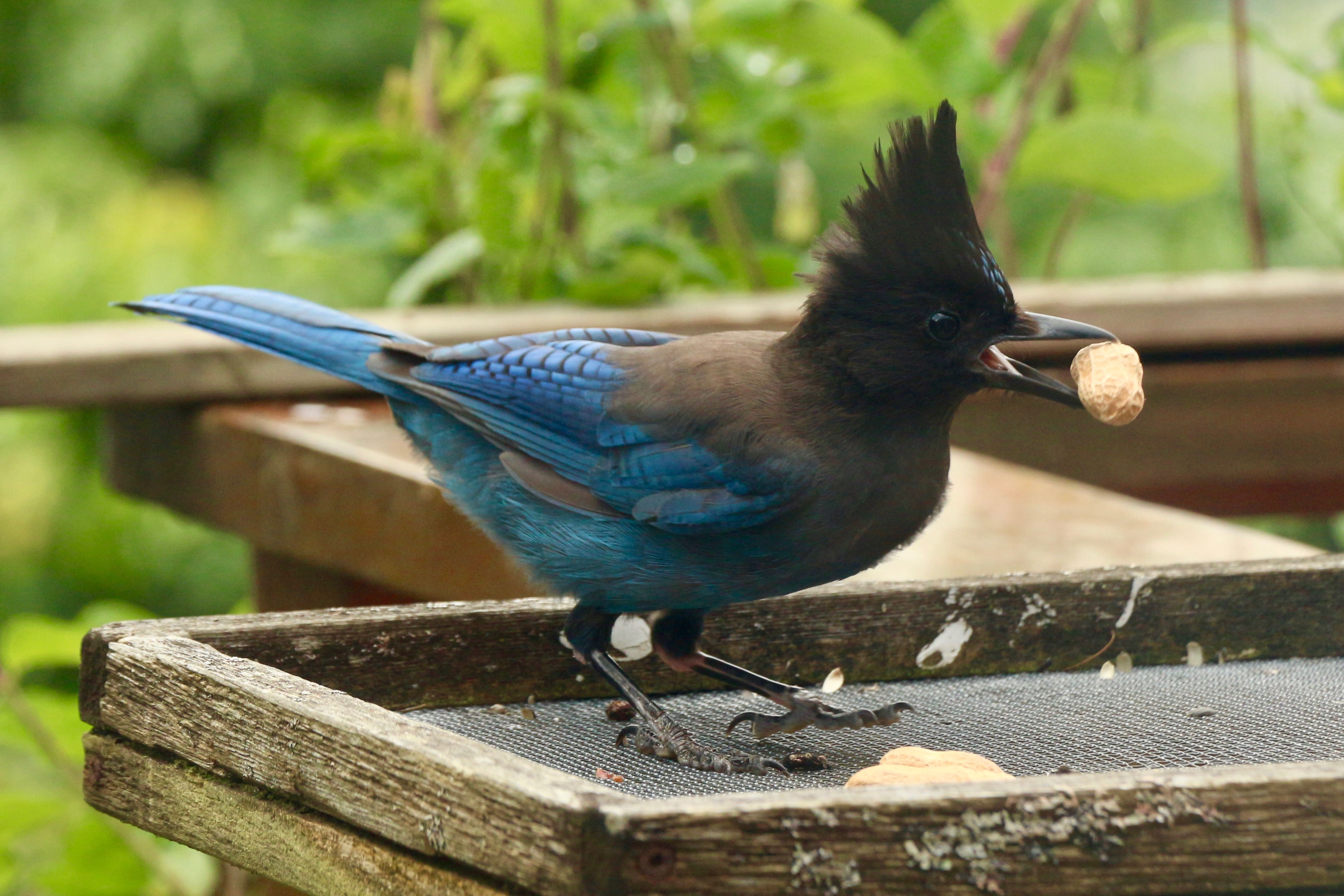
Steller's Jay -
Many birds get their colour from melanins! And just like humans, when there are issues with melanin production, you get albino birds and leucistic birds (birds that have partial loss of their colour and look much whiter).

Leucistic female mallard -
There's been research that shows that crows can identify and remember individual faces, and even pass on this information to future generations!
-
When researchers study crow funerals, they actually use masks and wigs so that the crows don't remember them and think that they killed one of theirs. Absolutely not kidding.
-
After habitat loss, outdoor cats are the number one cause of bird declines in North America. Not window collisions, not power lines, etc., not by far. Peer-reviewed research says so, so please keep your cats indoors and give them catios that are cat-safe and bird-safe!
-
You know how there's that cartoon trope about owls being able to rotate their heads 360°? Well, they can't. I believe 270° is the recorded max.
-
Birds are feathered theropods (hollow-boned dinosaurs) and are the ONLY KNOWN LIVING DINOSAURS. Get out of here with your crocodiles and alligators. Bow to our avian overlords.
-
Birds have a third eyelid, a "nictitating membrane," that they can actively control. It's a transparent-to-translucent eyelid that can be used to moisten and protect the eyes and clear debris while still being able to see.
-
As far as I know, the latest record-holder for longest uninterrupted flight is the common swift, which has been recorded staying in the air for ten months straight. Ten months. That's ridiculous.
-
You might associate parrots with a tropical or subtropical climate but there does in fact exist one species of alpine parrot - the kea. It's a large parrot found in New Zealand and they're sweet and curious and have been documented using tools.
-
Some birds are brood parasites, i.e., they lay their eggs in other birds' nests and have those birds raise their young. The brown-headed cowbird might be the most famous brood parasitic bird and unfortunately it gets a bad rep for this (undeserved, imo).
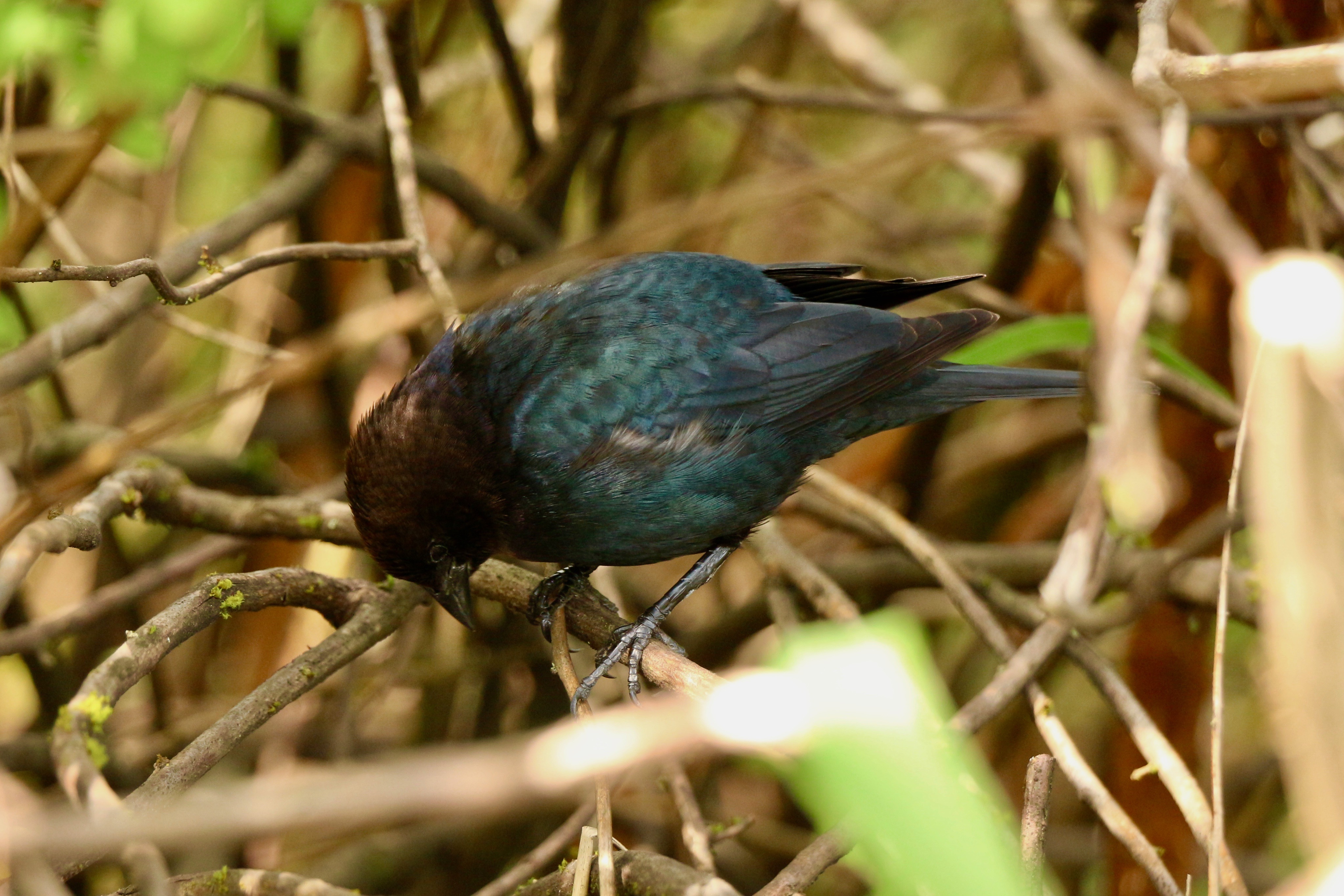
Male brown-headed cowbird 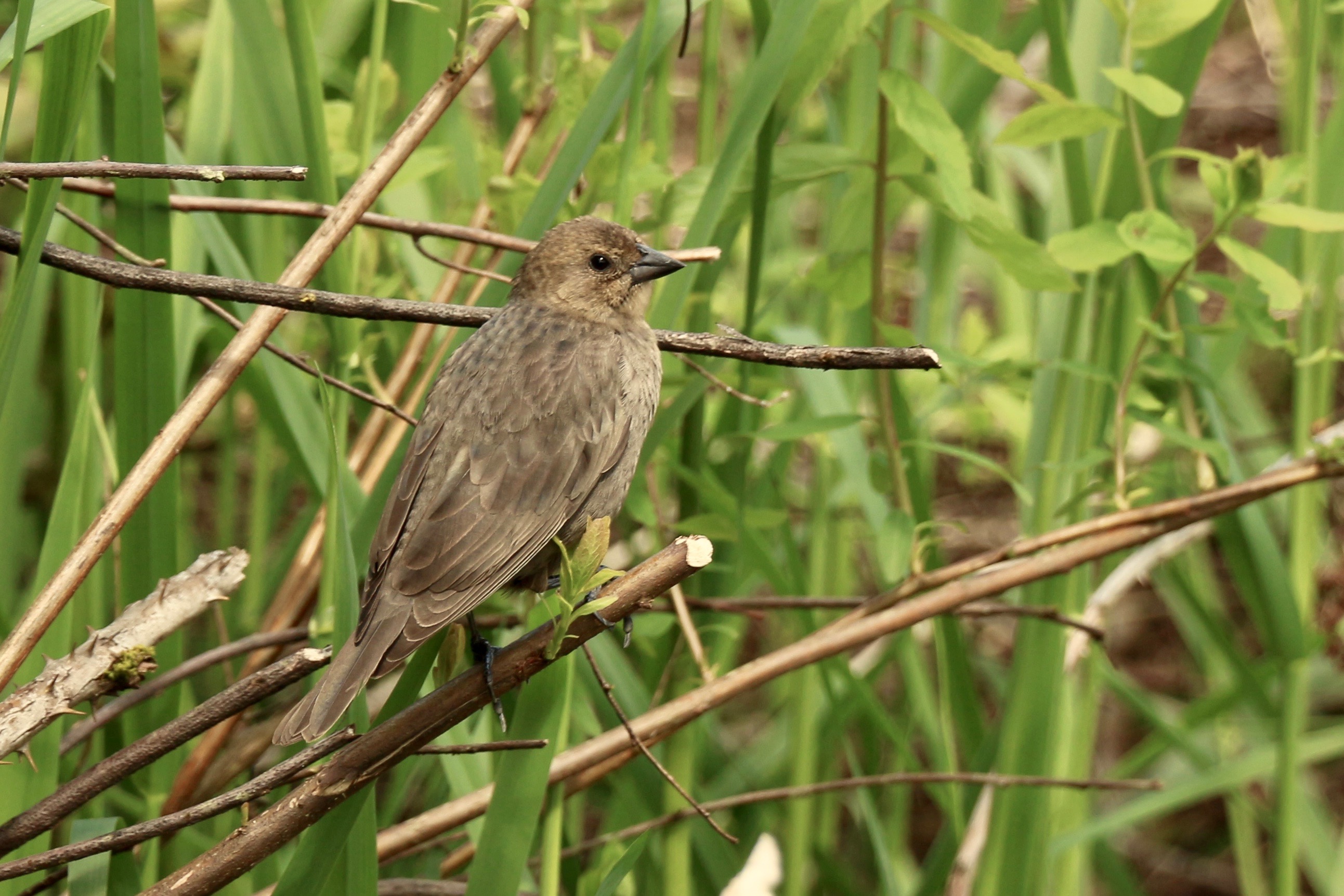
Female brown-headed cowbird -
Birds can be gay. You might have heard of the Central Park Zoo's famous gay penguin couple, but homosexuality has also been seen in other species of birds - flamingos and the amusingly named cock-of-the-rock come to mind.
-
Birds are sometimes given "eponymous" names in English, i.e., they're named after people. Unfortunately this often erases Indigenous and local history in favour of colonizers' names. Bird Names For Birds is campaigning to change this!
-
Language fact: 'seagull' is a colloquial / lay term, the technical term used by birders and ornithologist is simply 'gull'.

Silver gull -
The American kestrel is a tiny bird of a prey commonly referred to as a "sparrow hawk," despite being neither a sparrow nor a hawk, but a species of falcon.
-
Funny / naughty bird names should count as a bird fact. E.g., (off the top of my head) bushtit, booby, dickcissel, shag, woodcock, and as previously mentioned, cock-of-the-rock.
-
Odd fact I learned recently: when pelicans dive, they turn their bodies slightly to the left to avoid breaking their windpipes with the force of the impact.

Spot-billed pelican -
Just like me with my goth platform boots, the secretary bird stomps on its enemies (snakes). No, really - they have very powerful feet (force of up to 5x its own body weight!) and they kill snakes with quick stomps of their feet.
-
The bird most commonly referred to as just "pigeon" is a feral pigeon (feral version of the domestic pigeon which was domesticated from rock doves). They can actually be quite beautiful. Next time you see one, try to appreciate the glossy iridescence on the back of its neck!

Rock pigeon -
Birds can have symbiotic relationships with other animals. For example, cattle egrets eat ticks and flies off cattle's backs and get nutrition from it.

Cattle egret with a brown cow -
However, the purported symbiotic relationship between Egyptian plovers and the Nile crocodile (where the plover supposedly sits in the crocodile's mouth and gives it a dental cleaning, thereby also feeding itself) is considered suspect. Scientists: "pics or it didn't happen."
-
Birds can also have similar mutually beneficial relationships with plants. Frugivorous birds (ones that eat fruit) help plants by dispersing their seeds while also getting nutrition from the fruit.
-
There is a bird called the "vegetarian finch" which is named because its diet consists mainly of vegetarian things like fruits and leaves (not uncommon in birds). It's one of the many species classified under the label Galapagos finches (or Darwin's finches).
-
Yes, that Darwin! Those finches were a big part of the theory of evolution and are mentioned a bunch in his book On the Origin of Species. This is a good point to note that it is Bad to use evolutionary biology as an argument for eugenics, so please don't.
-
One last finch fact. There's another finch named for its diet - the vampire ground finch. Yes, it drinks the blood of other birds by pecking them till it draws blood and then drinking the blood. Isn't that wild?
-
Let me tell you some bird vision facts. Vision is important for almost all birds, with some exceptions. E.g., kiwis rely more on their senses of sound and smell than sight, so they have underdeveloped sight, and some blind kiwis have even been found thriving in the wild.
-
Most other nocturnal birds (yes, kiwis are nocturnal) have evolutionary adaptations for improved vision in the dark. They usually have larger eyes and proportionally more rods - one of the two types of light receptors in the eye, the one that helps with low-light vision.
-
Cones are the other type of photoreceptor in the eye, and they're responsible for colour vision. Humans have cones for red, green and blue (roughly) which we combine into colours. Most birds have cones for red, green, blue and ultraviolet. So yeah, these birds have UV vision!
-
The coolest bird vision fact imo is that birds use their left and right eyes for different things. It's like handedness in humans but for eyes, and it works because like us, birds have lateralized brain function (left and right brain hemispheres that handle different things).
-
Oh, another thing I remembered that's related to the physics of light is that you know how when things are underwater, there's refraction and the image of the thing looks like in its a different place than it is? Birds that fish have to correct for this, and they do!

Great blue heron -
Unfortunately I don't know as much about bird hearing other than that it's better than human hearing. I do know that owls have faces engineered to funnel noise directly towards their ears, and asymmetrical ears that help them echo-locate better without moving their heads.
-
Besides hearing well, owls also need to be quiet so that they aren't heard by their prey. Their slow flight and the structure of their wing feathers are adapted so they can fly soundlessly and without having to flap as much.
-
I once read something about how birds near airports seemed to be experiencing hearing loss because of the noise of jet engines, and that this was apparent from the frequencies in their birdsong. I did a quick search and this seems to be true but understudied.
-
Birds don't have noses. Most birds have nares though (nostrils) and some of them do seem to use smell to track down food - the most classic example is that vultures use their sense of smell to track down dead and decaying meat, which is what they eat!
-
Speaking of vultures, one of their characteristic things is that they have bald heads with no feathers. This is to keep themselves clean when they stick their heads into the carcasses they eat, and also very important to regulate their temperature when they fly high.
-
Every time a country has declared a war on birds, it has lost. Australia tried waging a war against emus and deployed the literal army. The emus just gave the army the finger and continued to exist and reproduce and wreak havoc on the crops. Australia eventually gave up lol.
Emu -
China—well, Mao Zedong—also tried to declare a war on sparrows. They thought that sparrows were eating lots of grain and so they started to kill them. But this upset the ecological balance because sparrows also eat locusts, and they eventually had to leave the sparrows alone.
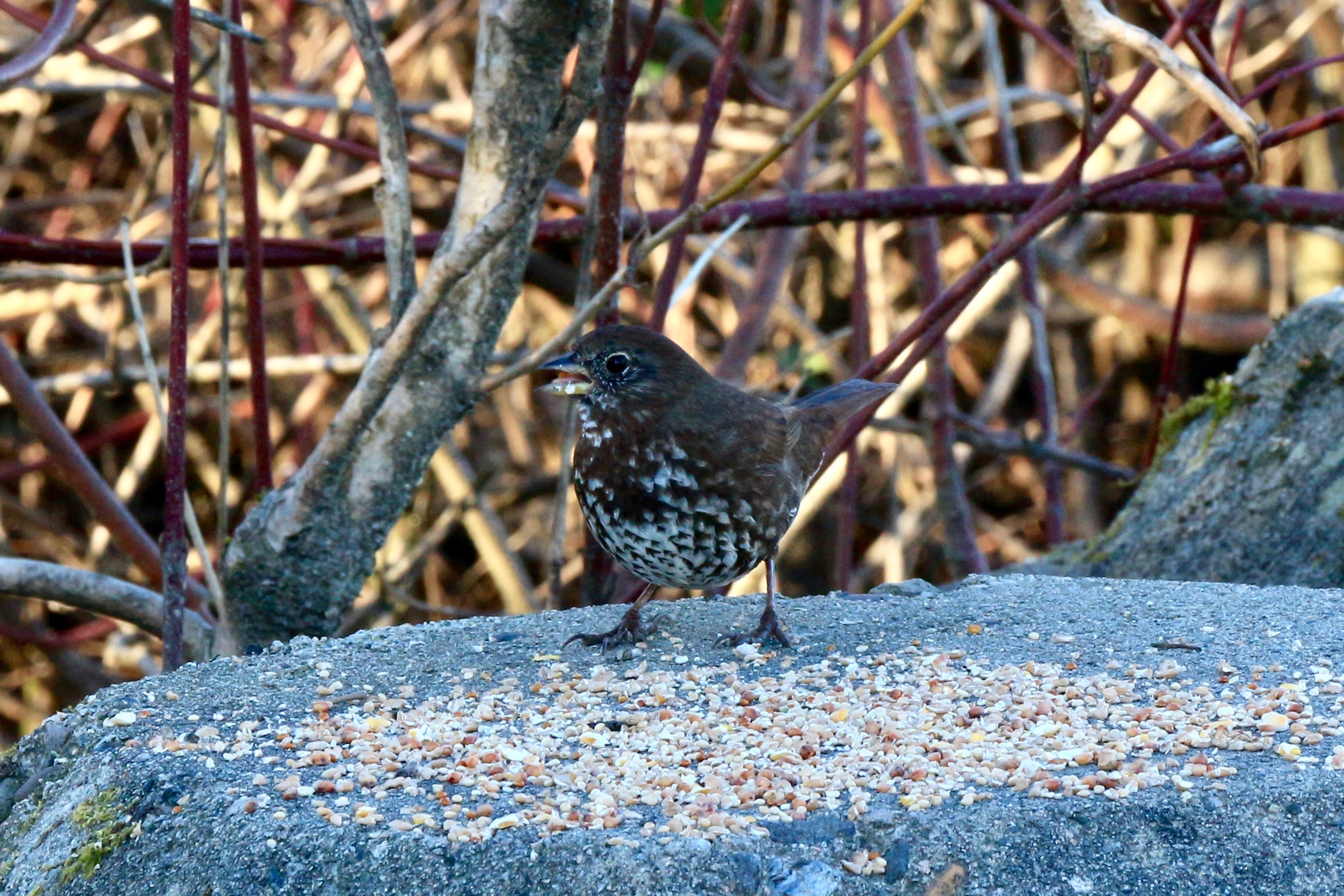
Fox sparrow -
The thing about how bird migration works is that we Don't Know™. But there are fun theories including that birds have an internal map, that they use smell to navigate, that they use the Earth's magnetic field to navigate. There's good evidence for these theories too.
-
There are also theories that birds use the sun and/or the stars and/or their internal circadian rhythm to navigate. They could also use landmarks. Maybe some combination of all of this. We don't know. Birds are just really cool like that.
-
Now sometimes for various reasons you get vagrant birds - birds that are far outside of their typical geographic range. These are my favourites! Sometimes they have bad navigation systems, sometimes they're blown off course by storms, sometimes they're just out for adventure!
-
Ok, let's do some more specific bird facts. You know how magpies are thought to like shiny, expensive objects? That's a myth! It turns out magpies are actually scared of shiny things (and also blue things, which were tested in the same study).
-
But satin bowerbirds absolutely love blue things. The males create and decorate bowers to entice the females, and they use more blue than other colours but no one really knows why. If you want to know more about bowerbirds, you should watch the documentary Dancing With The Birds.
-
Oh you know what I'd love to watch a documentary about? The New Caledonian crow. They've been documented using twigs to "fish" for grubs inside hard-to-reach places. Sometimes they'll literally fashion twigs into hooks. They're such good birds!!!
-
Ooh, let's talk bird pee and poop. You may know from experience that birds just go for it, mid-flight or whatever. You may not know that what comes out is actually pee AND poop, because they have one opening for both, and also no bladder.
Bird excrement -
This opening is called the cloaca and, uh, fun fact - it's ALSO used for reproduction in most birds. When birds mate, they touch cloacas and this is called the cloacal kiss. I swear!
-
Male birds of some species have dicks. I will let you look up duck penis on your own time, and I will preemptively warn you that you may be grossed out by it.
-
Back to bird pee and poop. Most bird nests aren't filled with excrement despite being filled with babies (notorious generators of excrement), so what gives? Well, some baby birds will actually go to the edge of the nest and pee / poo over the edge.

Young red-cheeked bulbul in its nest -
Other baby birds have evolved to eject their waste encased in a little white bag (called a fecal sac), that the parent then picks up and gets rid of. It's like the baby poos a diaper along with its poo. It's ridiculous and amazing.
-
The preen oil in ducks (and other water birds) waterproofs their feathers. Bird preening is a way for birds to clean their feathers and evenly distribute this preen oil all over themselves.
Preening black-headed ibises -
I haven't talked about the ossifrage / lammergeier / bearded vulture! If you thought it had a cool name, wait till you hear that it's diet is almost exclusively bones!!! Ossifrage means bone-breaker. It drops bones onto rocks from heights to break them and get at the marrow.
-
Shrikes (colloquially referred to as butcherbirds) impale their prey on sharp things like thorns or barbed wire. Metal as fuck.
-
Another fun language fact: shrikes are called shrikes because they shriek, and their family name Laniidae comes from the Latin word for butcher (lanius). (I don't know Latin or most scientific names of birds, I swear, this one just stuck because it's cool)
-
Baby crows have blue eyes and pink "gapes" - the edges of the mouth. Both darken as they grow older. I'm not sure why they have blue eyes, but having brightly coloured mouths is pretty common for baby birds to get their parents' attention to feed them.
-
Many bird species form creches to raise their young together. Just like a human creche, care for several young is delegated to a small number of responsible adults, so that more adults can spend time foraging, etc. Penguins and mergansers are some species that do this.
-
I saw a belted kingfisher fishing at the lake today, which is reminding me to tell you that kingfishers eat more than just fish. They eat insects, frogs, worms, etc. too, especially the ones that live in forests.

White-throated kingfisher -
The only bird in the world to have a beak that's longer than its body is the sword-billed hummingbird. It literally looks like Pinocchio, it's incredible.
-
Let's talk bird sleep. I mentioned earlier in the thread that birds have lateralized brain function like humans do, and that they can use each eye independently. This results in birds being able to sleep with one eye open / with one half of their brain, just like dolphins!
-
Birds sometimes sleep with one leg tucked up into their feathers. They do this to regulate their temperature! One less exposed leg is one less avenue to lose body heat, and can also give that leg a rest.
-
Oh and an additional consequence of #69 is that birds can sleep while flying!! They take little power naps!!! With half their brain!!!!
-
Soaring birds are fun. They use air currents to stay up without ever flapping their wings. They use "thermals" (columns of hot air) to stay aloft, because hot air rises and takes them with it!
-
Plumage (the feathers) of a bird are moulted often. Sometimes it's twice a year, sometimes once, sometimes only once every few years. It makes birds more challenging to identify (as a birder) because some of them literally change appearance with the season.

Male wood duck -
A cool fact I learned recently is that in Māori, there are often different names for the same bird in different seasons, which presumably corresponds to a difference in the plumage. Isn't that cool?
-
Flocking, apart from being a really interesting modelling problem, is cool because it shows cooperation with hierarchy. Birds that fly in V formations are basically exploiting aerodynamics so that the ones behind can fly faster more easily.
-
It turns out that J formations are more common for flocking birds than V formations, by the way, even though most people think of it as a V and refer to it like that!
-
Smaller birds have more complicated aerodynamics than larger ones and so this method of straight lines and Vs and Js tends to work less well for them. They tend to just cluster together in large flocks that somehow miraculously fly in an orderly way despite the chaos.
-
The prettiest form of flocking has to be murmurations of starlings! Thousands of them will gather into a flock and they make beautiful swirly patterns in the sky, like auroras but composed of birds flying in unison.
-
Fork-tailed drongos will use their alarm calls when there isn't a predator around to fool other birds and animals into abandoning their prey, and then they steal it and eat it! Clever bastards.
-
Bird banding is one way that researchers study birds' migratory habits and lives. It involves putting a metal band around a bird's leg with a unique ID on it.
Banded ibis foot -
When you think of birds that can mimic human speech, parrots might be what comes to mind. But it turns out lyrebirds, mynahs and starlings are also very good at it!
-
Did you know that birds yawn? Yawning is one of many "comfort movements," a term used for behaviours that birds exhibit that serve their mental and physical health.

Bonaparte's gull yawning -
One of the big pieces of bird news this year was that two California condors were produced asexually - they were genetically related to their egg-laying parent, but they contained no genetic material from any others! This asexual reproduction is called parthenogenesis.
-
We humans have been using birds for centuries, and falconry (using birds to help you hunt) is one of the oldest ways. Despite the name, falconry doesn't just involve falcons - you can also be a falconer with a hawk or an eagle!
-
Trained birds of prey are now sometimes employed as pigeon control at airports and in open-air areas where humans like to hang out. The next time your plane takes off and a bird doesn't fly into the engine, thank a hawk.
-
People think of twigs as traditional nesting material but birds that build nests are very creative and can use a lot more than that, including leaves, cotton, moss, fur, spider silk, etc.

Barn swallow with nesting material -
But there is a wide range of nesting habits across birds, from pigeon-style messy, almost incomplete-looking nests, to the elaborately woven multi-generational homes of weaver birds.
-
The oldest bird we know of is a Laysan albatross called Wisdom. She is over 70 years old and she returns every year to Midway Atoll where she was first tagged. This year, she's even incubating an egg with her partner.
-
Larger birds often get harassed by smaller birds, regardless of whether they are alone or in a flock. This behaviour is called "mobbing" and smaller birds do it to protect their nests. They can afford to do it because their smaller size makes them more agile.

Male red-winged blackbird mobbing a juvenile bald eagle -
When it rains, birds generally try to find shelter so that they can stay dry, and therefore, warm. But if it rains for too long they do eventually have to come back out to eat.
-
Speaking of staying warm, one of the cutest techniques that birds have to stay warm is fluffing their feathers, which traps air into air pockets and provides insulation. This is why you see birds become fluffier and rounder in the fall and winter.
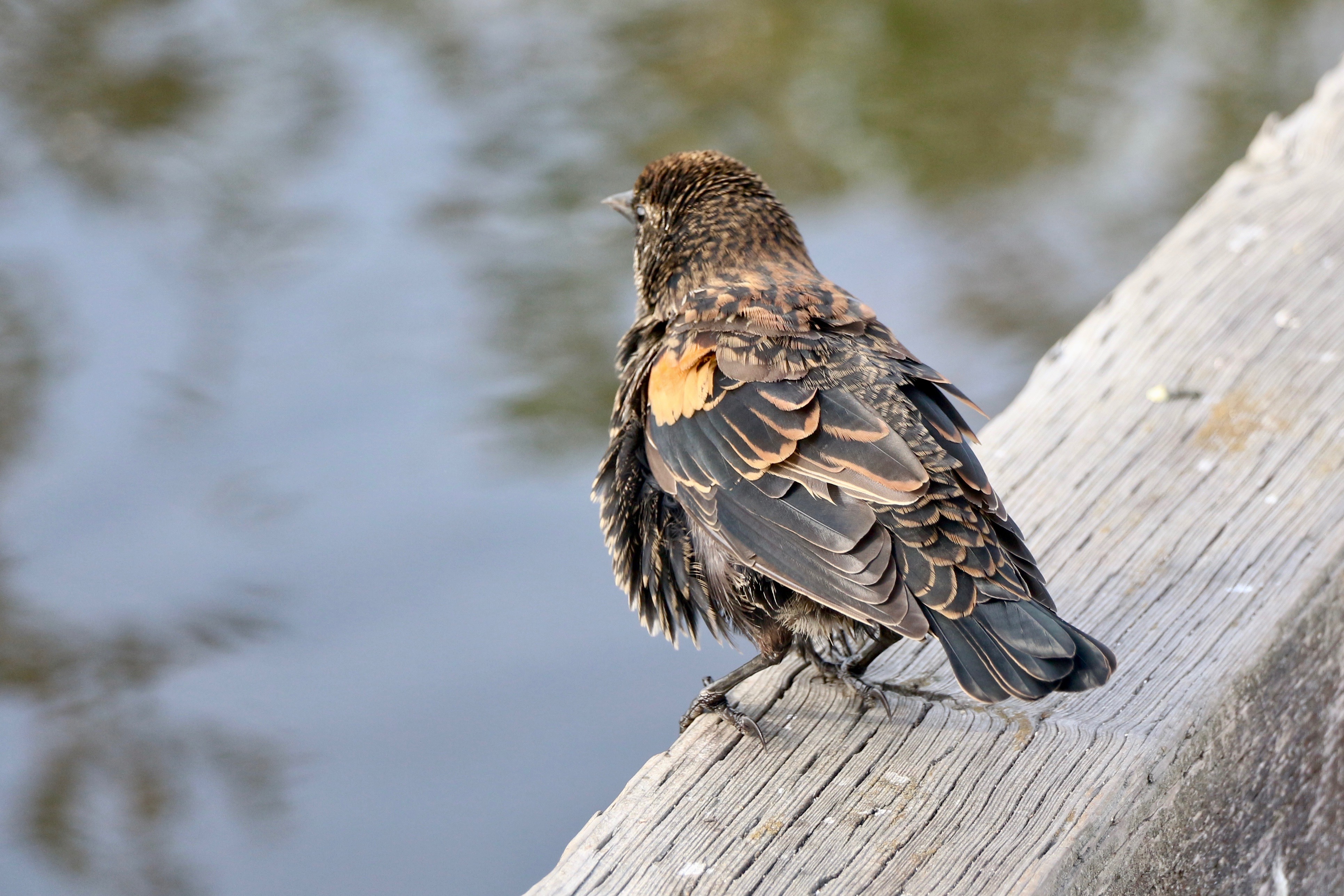
Juvenile male red-winged blackbird -
Bird species are often described as being sexually monomorphic (i.e, the male and female birds look identical) or sexually dimorphic (i.e., the male and females look noticeably different).
-
Sexual dimorphism can manifest in different ways. Often the male birds have brighter plumage than the female ones, e.g., the brown-headed cowbirds above. In raptors, it tends to be a size difference where the female birds are much larger than the male ones.
-
Other than keeping your cats inside, one of the best things you can do for birds is to not rake up your leaf litter. Birds eat insects that hang out in leaf litter and they use it for nesting material. So leave the leaves, save the birds!
-
Birds sometimes hang out in mixed-species flocks which has two advantages - with a wider range of skills they can watch out for predators better, and if they don't have the same food needs then they don't compete with each other for food.
-
Bird babies of different species range widely on the spectrum of precociality. Some are altricial like human babies - they're born helpless and require several years of care to fend for themselves. Others are precocial and leave the nest soon after hatching.
-
As a linguist, I am interested in the overlaps between linguistics and birds. One such overlap is that birds have accents in different places just like speech accents in humans - they're called song dialects, and they can sometimes even vary in neighbourhoods.
-
Another area of overlap is "warblish," a term for using existing words from spoken languages to imitate bird calls, unlike onomatopoeia which creates new words (e.g., "the flicker says wicka-wicka" vs "the barred owl says who cooks for you")
-
Turkeys are weird but their names are even weirder. In English it's a turkey, in Turkish it's a hindi, in Khmer it's a French chicken and in Portugal it's a peru?! Here's a fun article about multilingual turkeys.

Domesticated turkey -
You may associate birders with expensive equipment like fancy cameras, telescope lenses and massive spotting scopes. But all you really need to be a birder is an interest in birds!
And there you have it - 100 bird facts.
If any of this piqued your interest in birding, here are some websites, groups and apps I can recommend (unfortunately fairly specific to North America):
- All About Birds
- National Audubon Society
- The Cornell Lab of Ornithology
- Merlin Bird ID App
- eBird
- Birdability
- Feminist Bird Club
- Philly Queer Birders
- In Color Birding Club

This work is licensed under a Creative Commons Attribution-ShareAlike 4.0 International License.
- Next post: New name: Vagrant!
- Previous post: On better models of myself
- Back to the archive



